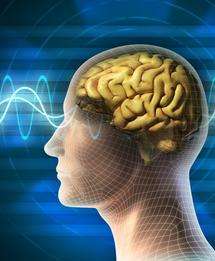New therapy uses electricity to cancel out Parkinson tremors

A new therapy could help suppress tremors in people with Parkinson's disease, an Oxford University study suggests.
The technique – called transcranial alternating current stimulation or TACS – cancels out the brain signal causing the tremors by applying a small, safe electric current across electrodes on the outside of a patient's head.
The preliminary study, conducted with 15 people with Parkinson's disease at Oxford's John Radcliffe Hospital, is published in the journal Current Biology. The researchers showed a 50 per cent reduction in resting tremors among the patients.
Physical tremors are a significant and debilitating symptom of Parkinson's disease, but do not respond well to existing drug treatments.
Tremors can be successfully treated with deep brain stimulation, a technique that involves surgery to insert electrodes deep into the brain itself to deliver electrical impulses. But this invasive therapy is expensive and carries some health risks, including bleeding in to the brain, which means it is not suitable for all patients.
In TACS in contrast, the electrode pads are placed on the outside of the patient's head, so it does not carry the risks associated with deep brain stimulation.
Professor Peter Brown of the Nuffield Department of Clinical Neurosciences, who led the study, said: 'Tremors experienced by Parkinson's sufferers can be devastating and any therapy that can suppress or reduce those tremors significantly improves quality of life for patients.
'We are very hopeful this research may, in time, lead to a therapy that is both successful and carries reduced medical risks. We have proved the principle, now we have to optimise it and adapt it so it is able to be used in patients. Often that is the hardest part.'
The research was supported by the National Institute for Health Research (NIHR) Oxford Biomedical Research Centre (Oxford BRC), a collaboration between Oxford University Hospitals NHS Trust and Oxford University to accelerate healthcare innovation. It was also supported by the Medical Research Council, Rosetrees Trust, the Wellcome Trust and the Engineering and Physical Sciences Research Council.
TACS works by placing two electrode pads on the patient, one close to the base of the neck and one on the head, above the motor cortex (part of the brain implicated in controlling the tremors).
The small alternating current stimulation the electrodes deliver is matched to the oscillating tremor signal to cancel it out, and suppress the physical tremor.
Professor Brown said: 'The approach is based on the fact the brain operates using brain waves. If we can stimulate with matching waves we can either replace a signal that is absent or, in this case, cancel out a pathological brain wave.
'It is similar to the principle of noise-cancelling headphones that we are all familiar with. Those headphones detect ambient noise and then produce a signal to cancel it out.'
Professor Brown said the therapy now had to be developed into a viable patient treatment for Parkinson's tremors, which could involve a system that would continually detect the brain signal and adjust the delivered stimulation to cancel it out.
He said such technology could involve a system where pads were placed under the skin, allowing the therapy to remain 'minimally invasive' to reduce risk but making it more convenient for a patient to be fitted with the device.
He added: 'There would be nothing to see, no wires on show, but it would deliver stimulation continuously.'
Professor Brown said further work would also look at the effectiveness of prolonged stimulation and whether the therapy may help the brain adapt itself to control tremors.















